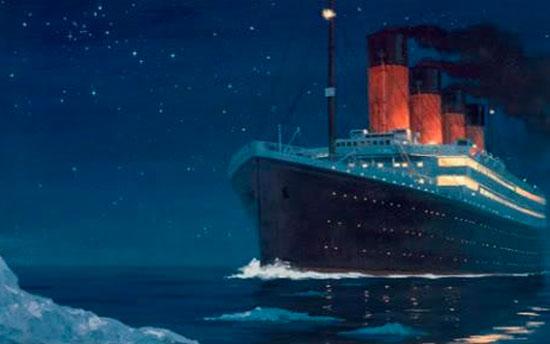4 theories for how the Titanic could have survived

One of the most notorious historical events of the 20th century, the sinking of the RMS Titanic was a tragedy which took the lives of over 1, 500 passengers, gaining international prominence and spawning urban legends and tales which still remain to this today. As a result its docking station in Belfast is a popular tourist attraction on many Northern Ireland tours, but what is even more popular are the range of alternative theories which surround the ship that detail how the disaster could have been avoided. From malfunctioning propellers to optical illusions, here are some of the alternative theories that use the latest scientific research to establish how the ship could have avoided this disaster:
The centre propeller
RMS Titanic had three steam-driven propellers, which were more advantageous as they were smaller and more efficient. They did have one disadvantage however, and this was that the centre propeller was one way and couldn’t work in reverse, hence why when the captain of the ship pushed the liner into full reverse to avoid the iceberg, the centre propeller stopped working immediately. Whilst doing so helped the ship not to go forwards, its location in front of the rudder further crippled the handling of the ship. If the centre propeller had been designed to keep working when in reverse, it’s likely that the Titanic would have avoided the iceberg completely.
Crashing into the iceberg head-on
The colossal cruise liner had been built with bulkheads in its bow in the event of a collision. If the ship had hit the iceberg head-on therefore, it’s predicted that only the first three or four watertight compartments would have been flooded, a less severe alternative to what actually happened. Importantly the ship would still be able to float, as it was designed to in the event that any two or all of its first four compartments became flooded.
Sailing during a full moon
A popular belief held by astronomers is that the Titanic sank because of a full moon, which caused unusually strong tides on the night of January 4, 1912 which caused the ship to encounter a large amount of icebergs three months later. This condition according to National Geographic’s Richard A. Lovett was also the closest lunar approach between the moon and Earth since A.D. 796, with this rarity being attributed to causing the ship to cross paths with a fatal iceberg which could have been avoided if the ship had sailed towards its destination at another time.
An optical illusion
This theory created by British historian Tim Maltin argues that the impact of the collision would have been significantly smaller if the Titanic had received assistance from a nearby ship which was present at the time. This was prevented from happening however by an unusual optical phenomenon caused by the atmospheric conditions present on the sea which prevented the ship from being seen. The process of super light refraction which occurred caused miraging, which is where the light is bent, which was recorded by other ships in the area at the time and prevented the Titanic from seeing the imminent iceberg it was about to hit. Again, in different circumstances where the conditions for the illusion were not present the ship would have been able to see the upcoming obstacle and act accordingly.

